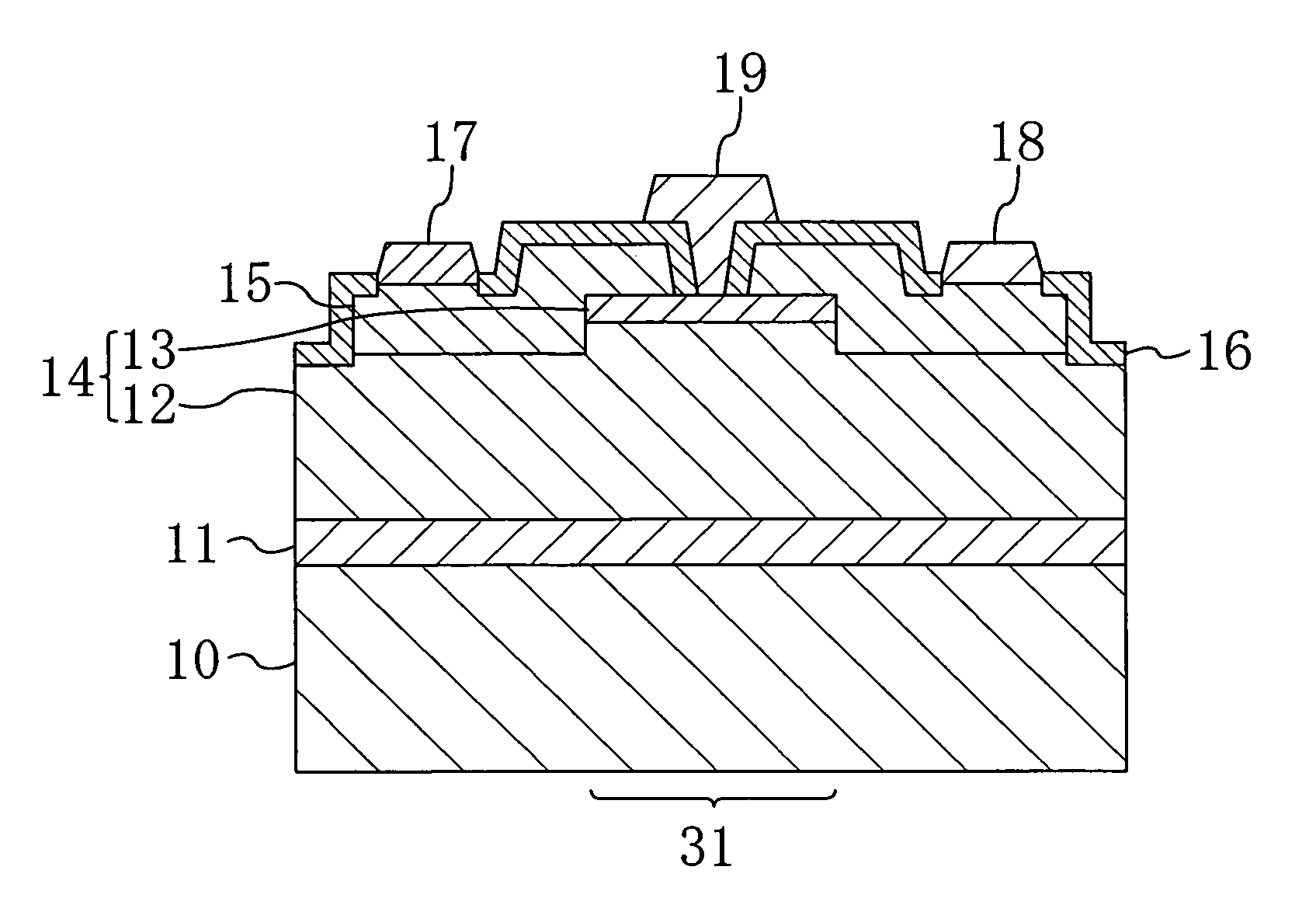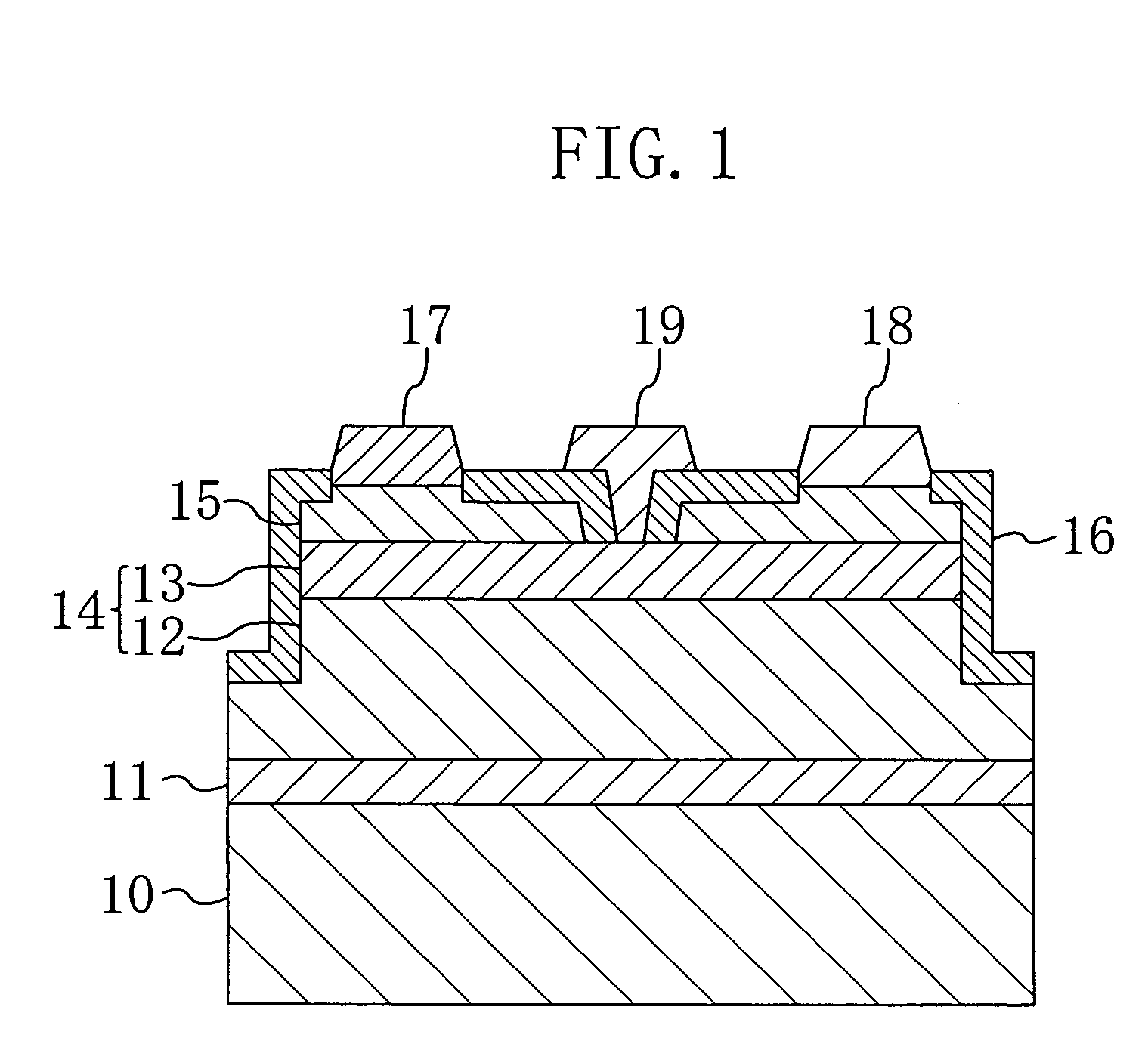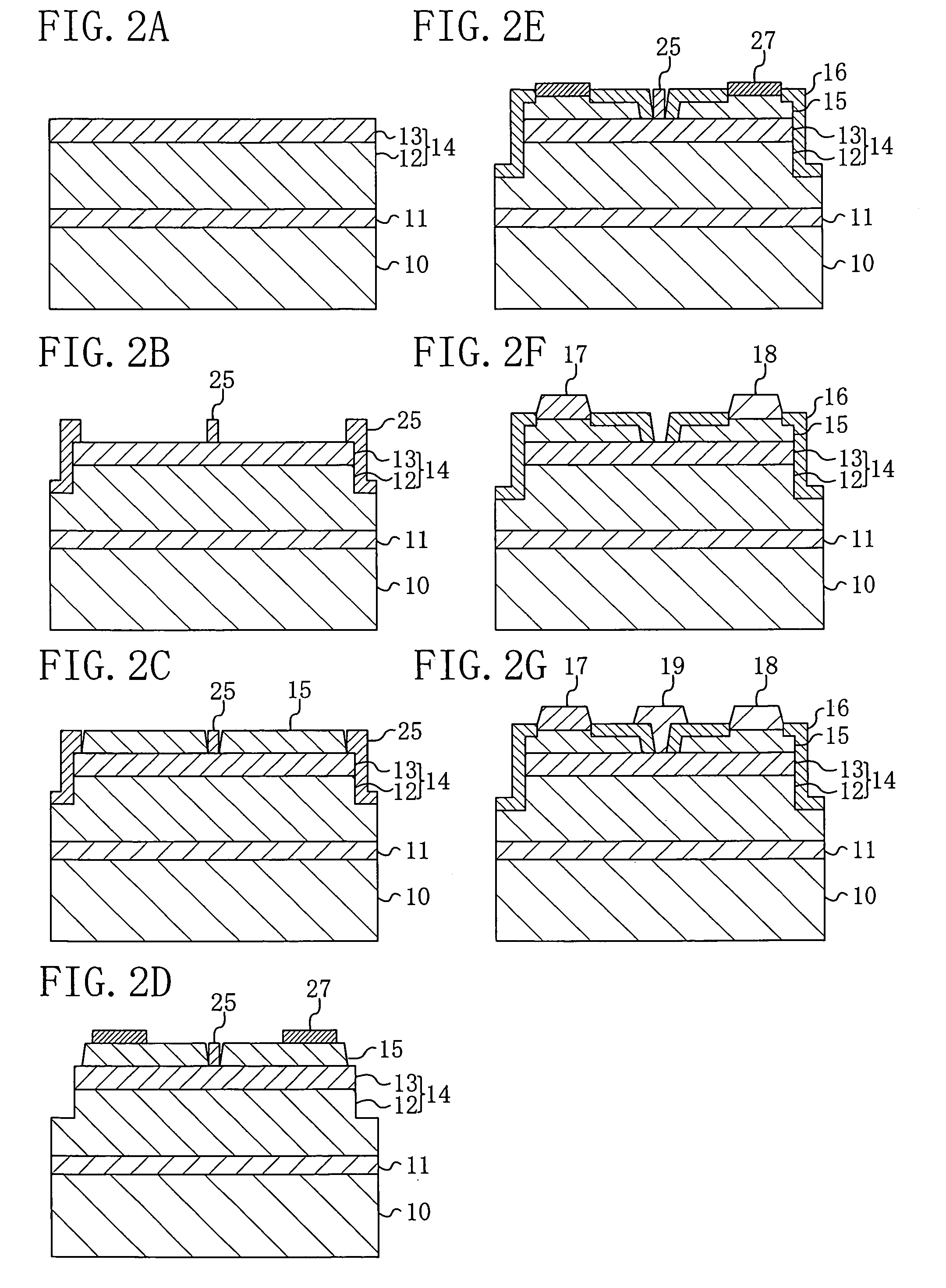Field effect transistor and method for fabricating the same
a field effect transistor and transistor technology, applied in the field of field effect transistors, can solve the problems of reducing yield, disadvantageous cost of gate electrode forming procedure, and difficulty in realizing a device with high frequency characteristics equivalent or better, and achieves accurate control, low series resistance, and high reproducibility.
- Summary
- Abstract
- Description
- Claims
- Application Information
AI Technical Summary
Benefits of technology
Problems solved by technology
Method used
Image
Examples
embodiment 1
[0046]Embodiment 1 of the invention will now be described with reference to the accompanying drawings. FIG. 1 shows the cross-sectional structure of a field effect transistor (FET) according to Embodiment 1 of the invention. As shown in FIG. 1, a first semiconductor layer 14 composed of an undoped GaN film 12 and an n-type AlGaN film 13 successively stacked and a second semiconductor layer 15 made of n-type AlGaN are successively formed above a substrate 10 of sapphire with a buffer layer 11 of AlN disposed between the substrate 10 and the first semiconductor layer 14.
[0047]A source electrode 17 and a drain electrode 18 made of Ti, Al, Ni and Au successively stacked are formed on the second semiconductor layer 15 to be spaced from each other. In regions outside the source electrode 17 and the drain electrode 18, the second semiconductor layer 15, the AlGaN film 13 and part of the GaN film 12 of the first semiconductor layer 14 are selectively etched for isolation.
[0048]In a region o...
embodiment 2
[0064]Embodiment 2 of the invention will now be described with reference to the accompanying drawings. FIG. 3 shows the cross-sectional structure of an FET according to Embodiment 2. In FIG. 3, like reference numerals are used to refer to like elements shown in FIG. 1 so as to omit the description.
[0065]As shown in FIG. 3, the FET of this embodiment is characterized by a mesa portion 31 formed in a first semiconductor layer 14. A buffer layer 11 of AlN is formed on a substrate 10 of GaN with a dislocation density as low as approximately 1×106 cm−2. An undoped GaN film 12 and an n-type AlGaN film 13 are successively deposited on the buffer layer 11, thereby forming the first semiconductor layer 14. The mesa portion 31 with a width of approximately 1 μm is formed in a part of the structure of the first semiconductor layer 14 made of the multilayer of the GaN film 12 and the AlGaN film 13. A second semiconductor layer 15 of n-type GaN is regrown so as to cover the top face and the side...
embodiment 3
Modification of Embodiment 3
[0095]A modification of Embodiment 3 will now be described with reference to the accompanying drawing. FIG. 8 shows the cross-sectional structure of a semiconductor device according to a modification of Embodiment 3. In FIG. 8, like reference numerals are used to refer to like elements shown in FIG. 5 so as to omit the description.
[0096]As shown in FIG. 8, in the semiconductor device of this modification, a first semiconductor layer 14 and a second semiconductor layer 15 are formed on an R-plane corresponding to the (1-102) plane of the plane direction of a substrate 40 of sapphire. The principal plane of the first semiconductor layer 14 and the second semiconductor layer 15 formed on the R-plane of the substrate 40 is an A-plane corresponding to the (11-20) plane of the plane direction. Since polarization is not caused vertically to the A-plane, no carriers are generated on an undoped hetero interface. Also, since an AlN film 63 has a very large band gap...
PUM
 Login to View More
Login to View More Abstract
Description
Claims
Application Information
 Login to View More
Login to View More - R&D
- Intellectual Property
- Life Sciences
- Materials
- Tech Scout
- Unparalleled Data Quality
- Higher Quality Content
- 60% Fewer Hallucinations
Browse by: Latest US Patents, China's latest patents, Technical Efficacy Thesaurus, Application Domain, Technology Topic, Popular Technical Reports.
© 2025 PatSnap. All rights reserved.Legal|Privacy policy|Modern Slavery Act Transparency Statement|Sitemap|About US| Contact US: help@patsnap.com



